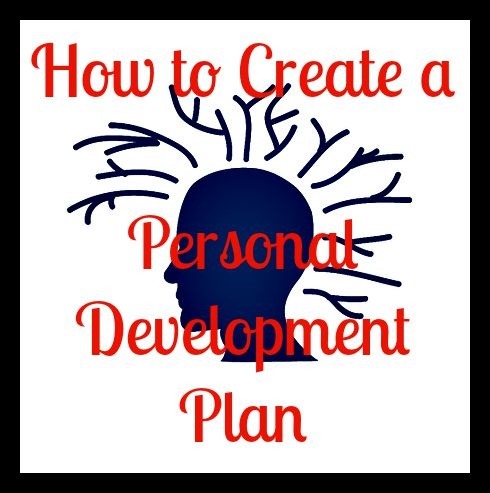
Take charge of your personal development by creating a plan.
Lots of people plan their finances. They tally up what they own and what they owe; they assess where they want to be financially in 1, 5, and 10 years; they develop a plan for getting to where they want to go; and then they execute their plan. However, few people do this for their personal development.
 Why is it important to create a personal development plan? Because, as motivational speaker Jim Rohn once said, “Your level of success will seldom exceed your level of personal development”. To create your personal development plan you need to do the following:
Why is it important to create a personal development plan? Because, as motivational speaker Jim Rohn once said, “Your level of success will seldom exceed your level of personal development”. To create your personal development plan you need to do the following:
- Evaluate where you are right now in terms of your personal development.
- Decide where you want to be 1, 5, and 10 years from now.
- Develop a plan to get there.
- Execute your plan.
Specifically, you want to take a look at the following;
1. Character Traits. Your character traits describe the kind of person that you are, and how you respond to different situations. Some of your character traits will be positive; here are some examples of positive character traits:
- Agreeable
- Cheerful
- Confident
In addition, some of your character traits will be negative; here are some examples of negative character traits:
- Careless
- Cynical
- Egocentric
When creating your personal development plan, you want to take stock of both your positive and negative character traits. Then, ask yourself the following:
- What other positive character traits do I need to develop?
- How can I develop these positive character traits?
- How can I overcome my negative character traits?
2. Attitude. Your attitude is a reflection of your state of mind and your perceptions about a situation, a person, or an object. Just like with character traits, people have both positive and negative attitudes.
Here are some examples of positive attitudes:
- Every problem is an opportunity in disguise.
- There’s always something I can do to change any situation that I’m in, even if it’s just adjusting my attitude.
- I have what it takes to deal with anything that life throws at me.
Here are some examples of negative attitudes:
- Everything that can go wrong, will go wrong.
- Things will never get better, so there’s no use trying.
- I’m surrounded by stupid and inept people.
When creating your personal development plan, ask yourself:
- Which areas of my life need an attitude adjustment?
- Which attitudes are most likely to help me get what I want?
- How can I create and maintain a positive attitude?
Include your answers to the questions above in your personal development plan.
3. Habits. A habit is a routine of behavior that you repeat over and over again, almost unconsciously. Good habits will move you toward your goals, while bad habits will move you away from them.
Just as there are positive habits that will make you rich, thin, and healthy, there are positive habits that will help you to achieve your personal development goals. Here are some examples:
- The habit of gratitude.
- The habit of meditation.
- The habit of keeping your focus on the present.
At the same time, just are there are negative habits that will make you poor, fat, and unhealthy, there are negative habits that will have a detrimental impact on your personal development goals. Here are some examples:
- The habit of always comparing yourself to others.
- The habit of constantly allowing your mind to wander.
- The habit of over-analyzing your decisions.
Ask yourself the following;
- What positive habits will allow me to achieve my personal development goals? How can I develop those habits?
- What negative habits do I currently have which will be an obstacle to the achievement of my personal development goals? How can I drop those habits?
Add the answers to those questions to your personal development plan.
4. Beliefs. What you believe is what you think about reality. Your beliefs influence how you think and how you behave. Positive beliefs can expand your life by opening new possibilities to you, while negative beliefs can limit your life by restricting what you think you can do.
As an illustration, a positive belief in the area of finances would be the following: “Making money is about adding value to the lives of others, and I have lots of value to offer.” Here are three positive beliefs in the area of personal development:
- Failure is just a stepping stone to success.
- With hard work and perseverance I will achieve all of my goals.
- Happiness is a choice, and I’m making the choice to be happy.
On the other hand, here’s an illustration of a negative belief in the area of finances: “In order to make lots of money I have to sacrifice my health and my family time.” Here are three negative beliefs in the area of personal development:
- If I fail it means that I’m not smart or talented enough.
- I don’t have what it takes to do well in life.
- Life is hard, and then you die.
When preparing your personal development plan, ask yourself the following:
- Which of my current beliefs are serving me well and helping me to achieve my personal development goals? What other beliefs would be helpful? How can I adopt those beliefs?
- Which of my current beliefs are holding me back and preventing me from achieving my personal development goals? How can I overcome these negative beliefs? What better, more empowering beliefs, can I replace them with?
5. Emotions. Take stock of your emotions. What are your most prevalent emotions? Are you happy most of the time, or are you frequently sad or anxious? Obviously, there are positive and negative emotions.
Positive emotions include the following:
- Joy
- Serenity
- Love
Negative emotions include the following:
- Anger
- Frustration
- Feeling Dejected
Ask yourself the following:
- What positive emotions are you already feeling on a regular basis? How can you feel those emotions more often?
- What other positive emotions would you like to feel? How can you feel those emotions?
- What negative emotions are you feeling on a regular basis? How can you get yourself to feel those negative emotions less often?
Include the answers to the questions above in your personal development plan.
6. Personal Development Skills. In order to achieve your personal development goals, there are certain skills that you’ll need to develop. Here are some examples:
- The skill of anger management.
- The skill of managing stress.
- The skill of emotional management.
Ask yourself the following: “What skills do I need to develop in order to achieve my personal development goals?” Then, add those skills to your personal development plan.
7. Personal Development Goals. You can set your personal development goals by looking at what you wrote down for all of the previous points. For example, if you identified “confidence” as one of the positive character traits that you want to develop, then one of your personal development goals will be the following: “Become more confident.”
As a second example, if you identified stress management as one of the skills that you want to develop, then another of your personal development goals would be: “Develop stress management skills.”
Add your personal development goals to your personal development plan.
Conclusion
Creating a personal development plan, and executing said plan, will make you a happier, better adjusted person. Use the points discussed above as inspiration. Live your best life by creating a personal development plan.





Related Posts:
- How to Write a Personal Manifesto
- How to Develop Your Character
- 16 Ways to Become a Better Person
- Eight Ways to Build New Habits and Make Them Stick
Did you enjoy this article? Subscribe to “Daring to Live Fully” by RSS or by email, and get free updates.




 Marelisa Fabrega is a lawyer and entrepreneur. She holds a Bachelor of Science in Business Administration from Georgetown University in Washington, D.C., as well as a Juris Doctor from the Georgetown University Law Center. You can learn more about her
Marelisa Fabrega is a lawyer and entrepreneur. She holds a Bachelor of Science in Business Administration from Georgetown University in Washington, D.C., as well as a Juris Doctor from the Georgetown University Law Center. You can learn more about her 





